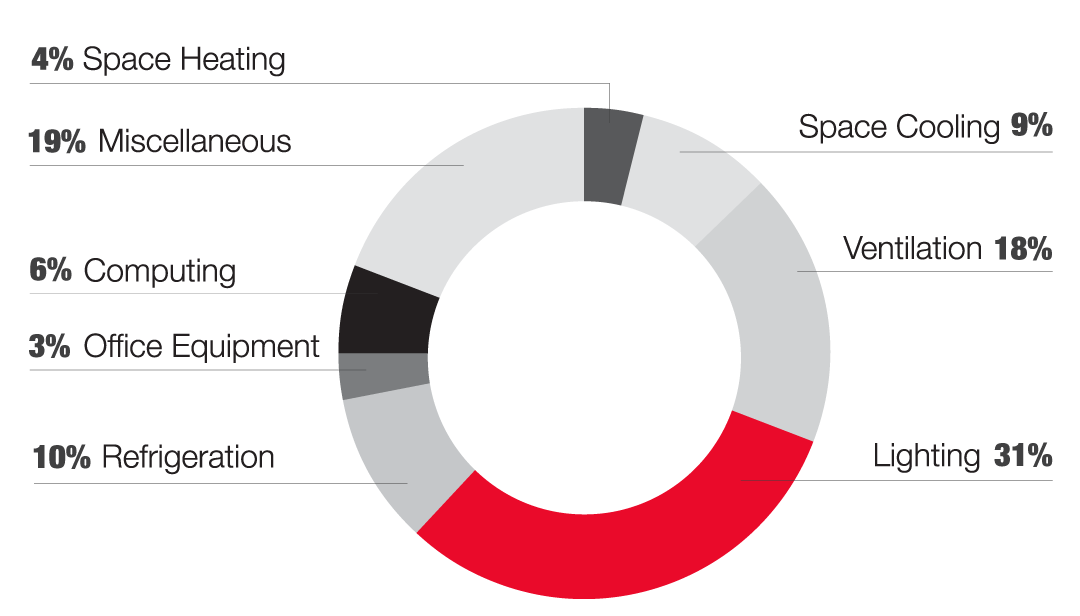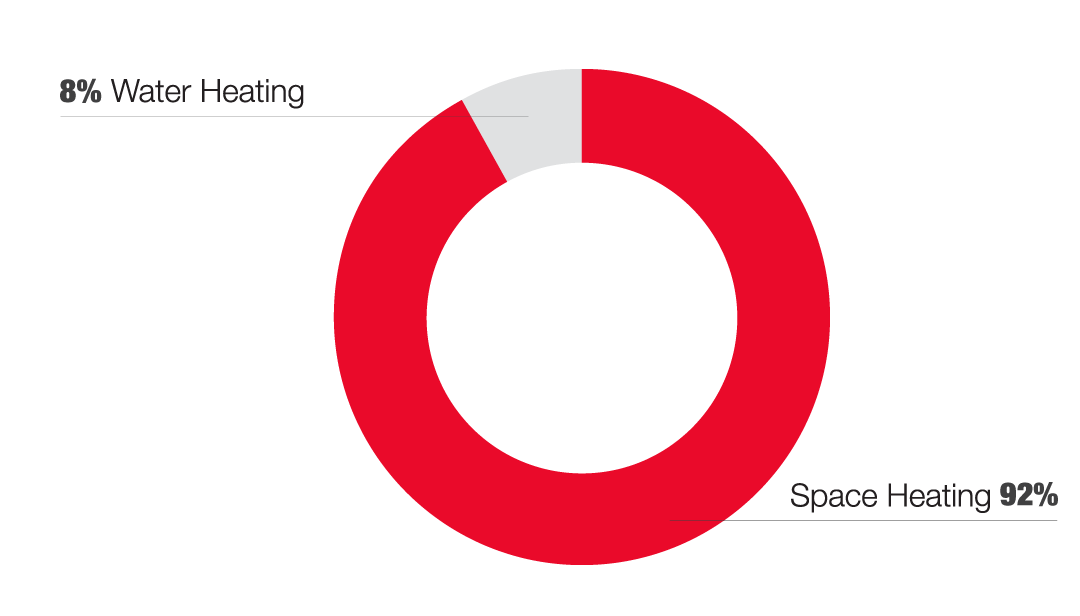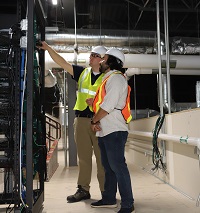Check-out maximum energy savings for your store
Did you know the average retailer in the Midwest spends over $8,000 per year on electricity and natural gas? Bundling upgrades and saving on improvements is easier than ever with the Small Business Express program, which connects you with qualified contractors and rebates to create lasting energy efficiency savings for your retail space.
What uses the most energy in retail stores
The following pie charts illustrate what retail activities use the most energy and cost the most. Space heating, cooling and ventilation, and lighting account for the largest portion of energy use in retail stores. Electricity end uses (from the top, counterclockwise): 4% space heating, 19% miscellaneous, 6% computing, 3% office equipment, 10% refrigeration, 31% lighting, 18% ventilation and 9% space cooling. Natural gas end uses include (from the top, counterclockwise): 8% water heating and 92% space heating.
Electricity End Uses

Natural Gas End Uses

What's costing retail stores the most
| End Uses | Average Electric Cost/Month | Average Gas Cost/Month | Energy Savings Potential |
|---|---|---|---|
| Space Heating, Cooling and Ventilation | $170 | $138 |
Moderate
|
| Lighting | $170 | - |
High
|
| Miscellaneous | $104 | - |
Moderate
|
| Refrigeration | $55 | - |
High
|
Small Business Express is here to lend a hand
Small Business Express makes it easy for you to get professional guidance to identify energy-saving opportunities. Eligible rebates can help lower your out-of-pocket cost to replace failing equipment, and help you save energy and money long term.
Ways to Save

Heating and cooling equipment is one of the largest energy users in retail spaces.
- Simple: Adjust thermostat settings up in the cooling season and down in the heating season, especially for offices, stockrooms or other less occupied areas. Turning off heating or cooling an hour before closing will reduce costs while still maintaining temperature. Keep doors closed to keep warm or cool air inside, and instead post a sign outside to attract customers. Seal around windows and doors with new caulk and weather stripping every few years to prevent energy loss and maintain comfort.
- Low cost: Install programmable thermostats to reduce heating and cooling load outside of open hours. Schedule regular tune-ups for air conditioners and furnaces to ensure systems are working correctly. Add insulation to ensure cool or warm air stays inside after sealing windows and doors.
- Capital investment: Replace heating and cooling equipment with new energy-efficient equipment.

Lighting is another large energy user in stores and typically costs $170 per month.
- Simple: Turn lights off when a space is not in use.
- Low cost: Install occupancy sensors to turn lights off for areas where lights might be left on for extended periods, despite not being occupied.
- Capital investment: Replace fluorescent lights with LEDs to see savings of up to 50%! LEDs also have a longer lifespan resulting in reduced replacements. Replace display lighting, such as track lighting, to LEDs for additional savings.

The remainder of a typical store’s energy usage is refrigeration, computing/office equipment and other miscellaneous energy uses.
- Simple: Check and replace seals around refrigerators and freezers. Manage computers to ensure computers go into low-power or “sleep” mode after a period of inactivity.
- Low cost: Service your refrigeration equipment every two years. Add controls to vending machines to limit their energy use when not being used. Install advanced power strips, which detect a drop in energy usage and turn off electronics when staff has left for the day.
- Capital investments: Upgrade to ENERGY STAR certified models when replacing equipment.

See how your retail space compares
Energy Use Intensity (EUI) is a common measure used to benchmark a building’s energy use as a factor of its size. To calculate EUI for your retail space, total your electric bills for one year, then divide by your building’s square footage; repeat for natural gas. If the score is lower than those listed below, you are using less energy than most.
|
Average EUI for Retail Spaces in the Midwest
|
|
|---|---|
|
Electricity
|
Natural Gas
|
|
10.8 kWh/square foot
|
0.34 therms/square foot
|
Call us today at 800-432-8583 to learn about tools that can help you with benchmarking your facility.
Other Resources